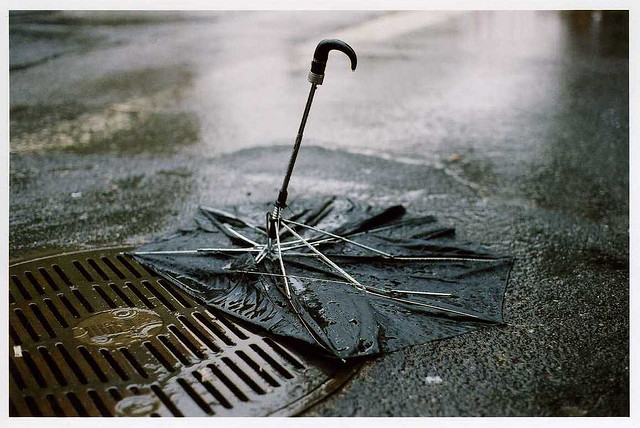Nuclear latency and the future strategic environment
Posted By Michael Malyshev on March 11, 2015 @ 10:00
 [1]
[1]Since the 1946 ‘Report on the International Control of Atomic Energy’ and the closely associated Baruch Plan formulated by the United States, ‘nuclear latency’—put simply, the potential for countries to obtain nuclear weapons capability—has been a factor threatening to undermine strategic equilibrium on the world stage. The Nuclear Non-Proliferation Treaty and resulting nonproliferation regime may have allayed mid-20th century concerns about the rate of spread of nuclear weapons, but the notion of nuclear latency has by no means become obsolete. At the same time, due to the complexity of underlying issues, the term continues to be widely misinterpreted and misjudged.
From a technology standpoint, the question of nuclear latency is complicated by the inherent duality of nuclear expertise—suitable both for nuclear weapons and for use in civil nuclear power programs. Accumulating a high level of nuclear capability under the guise of legitimate civilian programs may enable countries to maintain significant weaponisable knowledge without attracting a harsh backlash from the international community for having actually crossed the line. Therefore, from a political and analytical standpoint understanding a country’s motivations is critical. Arms control negotiators, the global analytical community and international nuclear watchdog agencies need a meaningful definition of nuclear latency that takes account of both capability and intent in order to develop a common understanding of the issue and deal with it effectively.
The list of 44 Comprehensive Nuclear-Test-Ban Treaty Annex 2 states, minus the number of recognised, de facto and assumed nuclear-weapon states, could be a reasonable shorthand roster of nuclear latency candidates. The possession of indigenous capabilities to run both open and closed nuclear fuel cycles successfully is the ultimate indicator of nuclear latency. With such experience, a country harbouring an entrenched sense of existential insecurity, having a history of clashes with its neighbours and seeking to gain more regional dominance and international prestige could make a decision to weaponise. Nuclear watchdogs and other entities, including intelligence services, must remain vigilant.
To explore the phenomenon in some detail, an ASPI paper published today [2] examines the cases of the Republic of Korea and Japan. Latent nuclear technology alone doesn’t result in nuclear proliferation—proliferation-related motivations, choices and decisions are required as well. Therefore, one useful way to analyse a country’s proliferation decisionmaking is through the lens of ‘technical capability + intent’. Prospectively, the main risk factor with the two Asian countries is their loss of confidence in the availability of a US nuclear umbrella. In contrast to the focus on indigenous nuclear programs in those nations, turn-key nuke acquisition may be more attractive to some countries in the Middle East. The nonproliferation community and intelligence services around the world will have to continue keeping an eye on the region’s geopolitics.
Australia should continue supporting the global nonproliferation agenda in any way it can. Here are four key recommendations:
- If a nuclear security summit were to be scheduled for 2018, holding it in Australia would further strengthen Australia’s standing in the world as an effective advocate for the responsible use of nuclear materials.
- The Asia–Pacific Safeguards Network is a promising venue for joint efforts seeking to shape the nuclear policy vector in nuclear-latent countries in the Pacific region.
- Australia should pursue a leadership position in a diverse group of states that contribute to the International Partnership for Nuclear Disarmament Verification proposed by the US in December 2014.
- Australia needs to continue its participation in annual Non-Proliferation and Disarmament Initiative meetings. Ensuring the effectiveness of this ministerial-level group, initiated by Australia and Japan, will consolidate Australia’s nonproliferation leadership position in the region and in the non-nuclear-weapon states community as a whole.
Michael Malyshev studied at the Moscow Military Institute, American University, Georgetown University and the National Defense Intelligence College in Washington, DC. He subsequently worked as an analyst and senior analyst at the US Departments of State, Defense, and Energy. Image courtesy of Flickr user Tyler Clemens [3].
ASPI Strategic Insights ‘Nuclear latency and the future strategic environment’ by Michael Malyshev is available free for download here [2].
Article printed from The Strategist: https://www.aspistrategist.org.au
URL to article: https://www.aspistrategist.org.au/nuclear-latency-and-the-future-strategic-environment/
URLs in this post:
[1] Image: http://www.aspistrategist.org.au/wp-content/uploads/2015/03/2453915505_97797be1c8_z.jpg
[2] an ASPI paper published today: https://www.aspi.org.au/publications/nuclear-latency-and-the-future-strategic-environment
[3] Tyler Clemens: https://www.flickr.com/photos/78476250@N00/2453915505/in/photolist-6EvzRF-5nNnxB-awnoic-4JQXA2-bLR9mR-n3HwHq-7i2o5R-7i2nMZ-7AUrrw-7Gdnuu-9qytaN-hQdmCs-k44AVa-kaHB1X-hQdaFE-kaHB4H-bor8mc-6disjh-8uS3hZ-aj82xT-dK466W-okBSq1-nw9xZt-53qsNR-e9hXrX-bw7HGB-fKa2AU-xsjHE-8oEPcR-3CdQ7-4Lx682-7i6juS-Ak8jw-6fQGKx-74CPwB-4AUTQa-9Sgo8d-6Js4eh-7i6iao-7i2rJv-7i6krh-7i2qJx-7i2qnB-7i6gx1-7i2ptH-7i6kBq-7i6gSf-7i6hVY-cCu56E-2T4fra
Click here to print.